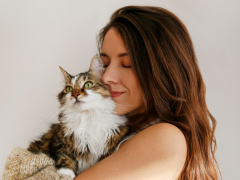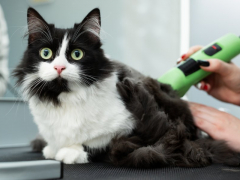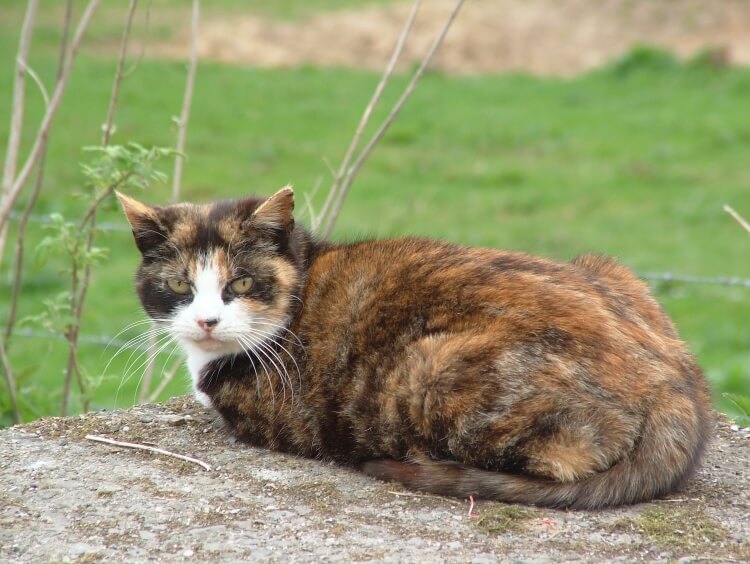
Scientific language is designed to make the world a less offensive, more sanitised place. If I told you that Eddy, the cat in the picture, had IBD, you might think “that sounds interesting – I wonder what that is?
If, on the other hand, I told you that the poor cat had suffered from copious diarrhea for six months, your reaction would be quite different, along the lines of “yuck….poor cat (and poor owner)”.
Quick Overview: Inflammatory Bowel Disease (IBD) In Cats
 Common Symptoms: Chronic vomiting (of either food, bile, or hairballs) and/or diarrhea, weight loss, abdominal pain, lethargy, poor hair coat quality, gas, blood in the stool.
Common Symptoms: Chronic vomiting (of either food, bile, or hairballs) and/or diarrhea, weight loss, abdominal pain, lethargy, poor hair coat quality, gas, blood in the stool.
 Diagnosis: Full labwork and x-rays to rule out other causes of GI upset and weight loss, abdominal ultrasound, surgical biospy of digestive tract (most invasive but most definitive).
Diagnosis: Full labwork and x-rays to rule out other causes of GI upset and weight loss, abdominal ultrasound, surgical biospy of digestive tract (most invasive but most definitive).
 Requires Ongoing Medication: Yes
Requires Ongoing Medication: Yes
 Vaccine Available: No
Vaccine Available: No
 Treatment Options: Prescription novel protein or hydrolyzed protein diet, steroids or other immunosuppressant medications, vitamin B12 (cobalamin) supplementation, probiotics, metronidazole which is classified as an antibiotic may also have some anti-inflammatory effects beneficial for use in IBD.
Treatment Options: Prescription novel protein or hydrolyzed protein diet, steroids or other immunosuppressant medications, vitamin B12 (cobalamin) supplementation, probiotics, metronidazole which is classified as an antibiotic may also have some anti-inflammatory effects beneficial for use in IBD.
 Home Remedies: None
Home Remedies: None
What Is IBD in Cats?
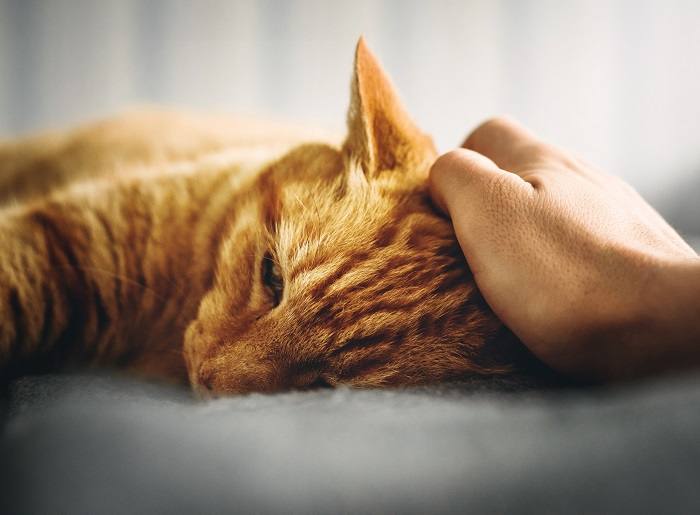
IBD is the abbreviation for inflammatory bowel disease (IBD), which is a common condition in older cats (although it can be seen at any age, and has even affected kittens as young as four months).
IBD happens when inflammatory cells accumulate in the lining of the gastrointestinal tract (the GI tract), which means the stomach, small intestines and/or large intestines. These inflammatory cells disrupt the normal function of these areas.
When the stomach is inflamed, this is known as gastritis, and when the intestines are inflamed, it’s called enteritis. When both areas are inflamed, it’s known as gastroenteritis. The clinical signs of feline IBD depend on which parts of the GI tract are involved.
What Are the Symptoms of IBD?
The hallmark signs of IBD are persistent, recurrent gastrointestinal disruption, resulting in chronic vomiting and/or loose faeces or diarrhea.
The signs shown by the cat depend on the area of the digestive tract that’s most affected: inflammation of the stomach (gastritis) causes vomiting, while if the intestines are inflamed (enteritis), diarrhea is seen. If both areas are inflamed (gastroenteritis) then both vomiting and diarrhea may be seen.
Interestingly, “hair balls” are often blamed when cats vomit occasionally, but recent thinking suggests that these cats actually have a form of IBD, and that the fur that is regurgitated just happens to be there, because they have been grooming themselves.
So if your cat brings up hairballs regularly, perhaps you should talk to your vet about the possibility of a diagnosis of feline IBD.
Other clinical signs of IBD can include:
- Weight loss
- Poor appetite
- Dry, dull, staring hair coat (due to poor absorption of nutrients)
- Abdominal pain
- Increased frequency of passing faeces
- Increased urgency to pass faeces (e.g. rushing out of cat flap)
- Mucus and blood in the faeces
- Constipation may be suspected, although in fact affected cats may be straining because of an irritated lower bowel rather than any sort of faecal impaction.
There are many other diseases that can cause these signs, including easily treatable problems like parasites and complicated conditions like cancer, so if your pet shows any of these signs, it’s important to have an accurate diagnosis confirmed by your vet.
What Causes IBD?
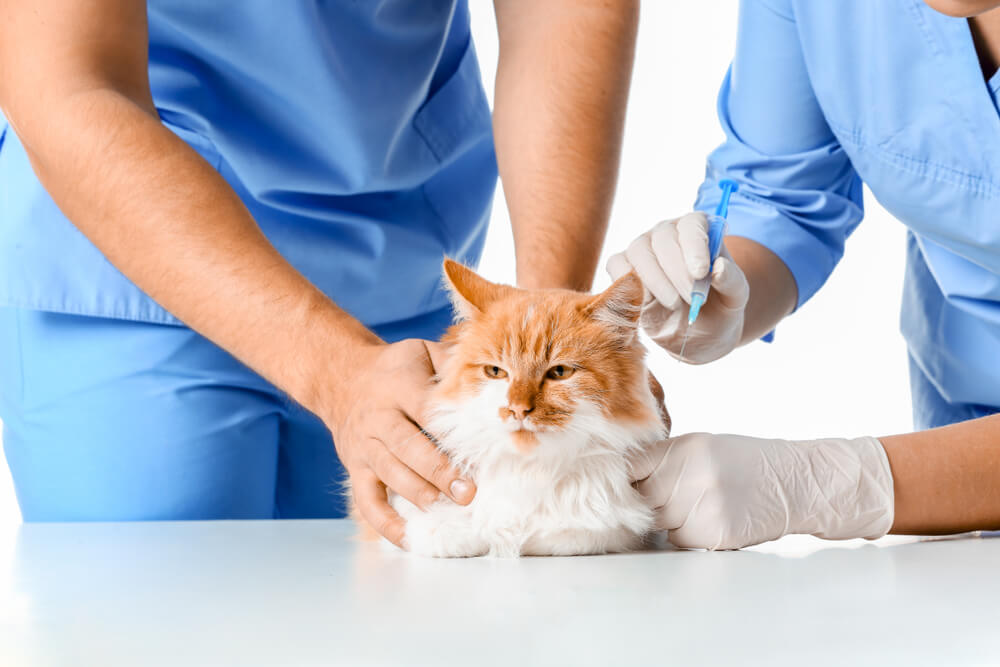
The exact cause of IBD remains unknown but both environmental and genetic factors play a role: it’s more common with some diets and in some breeds of cat (such as Siamese).
The key problem is an abnormal immune system response – a type of allergy – to components of the diet.
Research in this area is ongoing, with recent suggestions that IBD may be linked to the microbiome, with affected animals having changes in their intestinal flora.
How Is IBD Diagnosed?
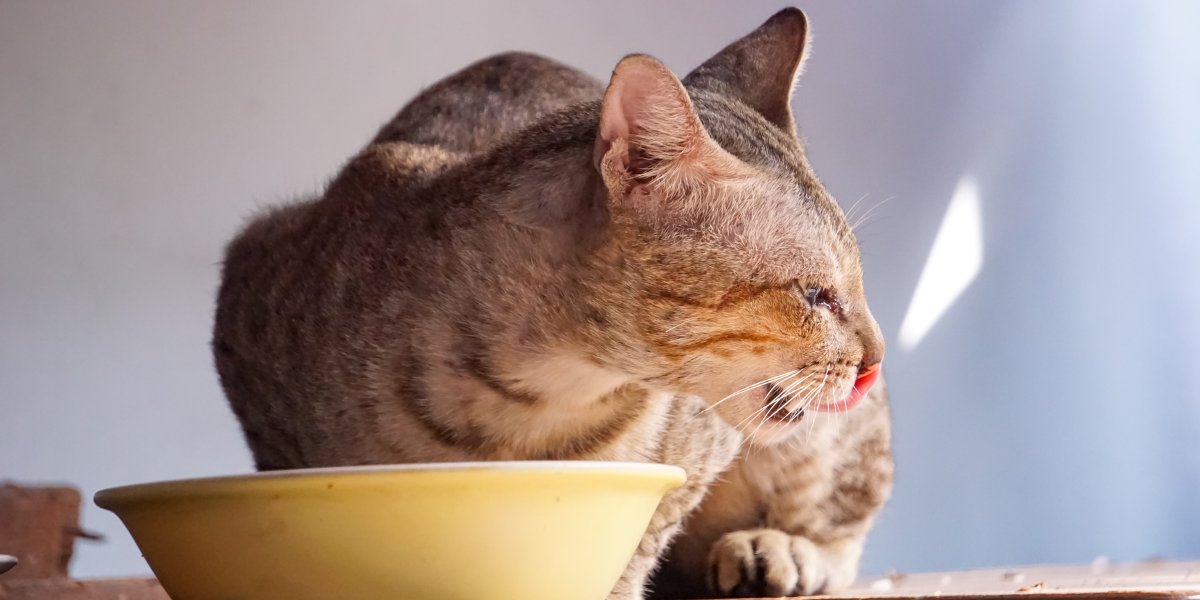
There is no single test that can be used to make a definitive diagnosis of IBD, but there are six key features that are often used to confirm the diagnosis.
- Long-standing (e.g. over a month) ongoing or recurrent signs of digestive disturbance e.g. regular vomiting and/or chronic diarrhea
- Evidence of inflammation of the digestive tract from a biopsy, which may be taken via an endoscope or sometimes via exploratory surgery. The infiltration may have a technical description based on the precise inflammatory cells identified (e.g. lymphocytic, lymphoplasmacytic, etc). These describe the cells seen by the pathologist in the biopsy under the microscope.
- Ruling out of other causes of digestive tract inflammation (e.g. parasites, pathogenic bacteria etc)
- Ruling out of other diseases that could cause similar signs (e.g. hyperthyroidism, pancreatic enzyme deficiency, cancers). Procedures like ultrasound and x-rays may be needed as part of this workup.
- Poor response to simple treatments like a bland diet and wormer medication to treat intestinal parasites
- Good response to anti-inflammatory treatments
How Is IBD Treated?
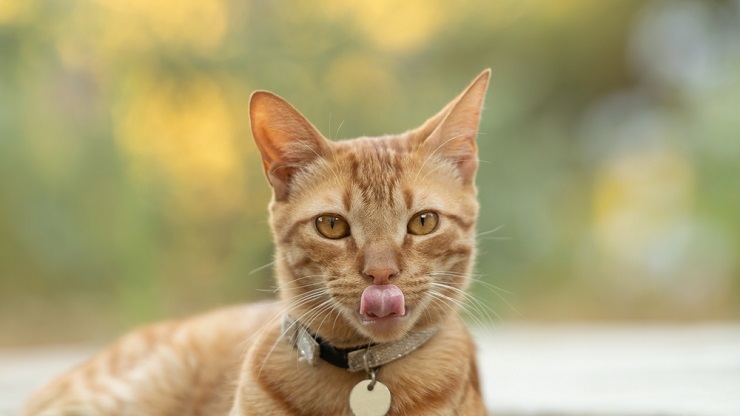
Once the diagnosis has been confirmed by your veterinary surgeon (DVM), treatment for feline IBD focusses on reducing the inflammation of the digestive tract.
This can be done in two ways:
- Feeding a special diet that’s less likely to provoke a reaction
- Using medication to suppress the overactive immune system
Dietary modification can make a significant impact. A measure as simple as feeding a highly-digestible diet could be enough to resolve mild cases of IBD.
This can help to reduce inflammation by decreasing the antigenic stimulation of the intestines caused by the masses of breakdown products that are produced during the complex digestive processes needed for some foodstuffs.
What’s the Best Food for Cats With IBD?
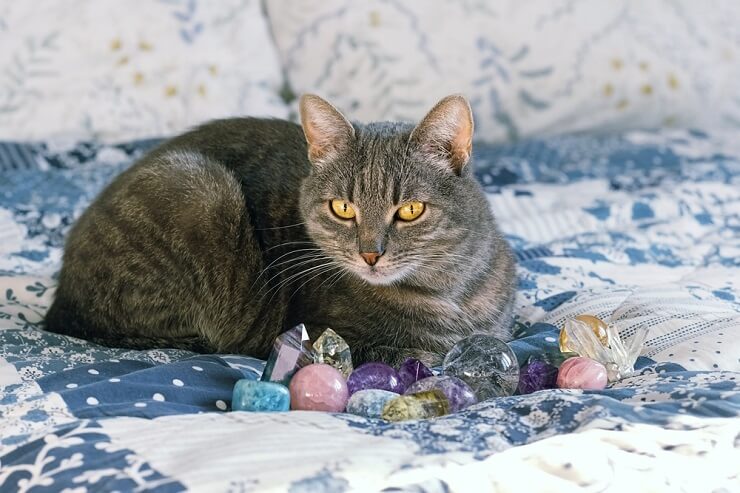
A highly digestible diet is the aim, to minimise digestive breakdown products that may create inflammation: this means low fat levels, reasonably high protein levels, and reduced carbohydrate levels.
To get technical, protein digestibility should be greater than 87% (typical levels are 78-81%), carbohydrate digestibility should be greater than 90% (typical levels are 69-79%), and fat digestibility should be greater than 90% (typical levels are 77-85%).
Cats are obligate carnivores, so it’s no surprise that protein sourced from meat is easier for them to digest than protein sourced from plants.
Also Read: Best Cat Food for IBD
Furthermore, higher quality protein (e.g. chicken fillet) is easier to digest than meat by products (e.g. offal and ground up chicken feet). Single source carbohydrates (e.g. rice) are more digestible than a mix of different sources.
What Ingredients Should Be Included in Food for Cats With IBD?
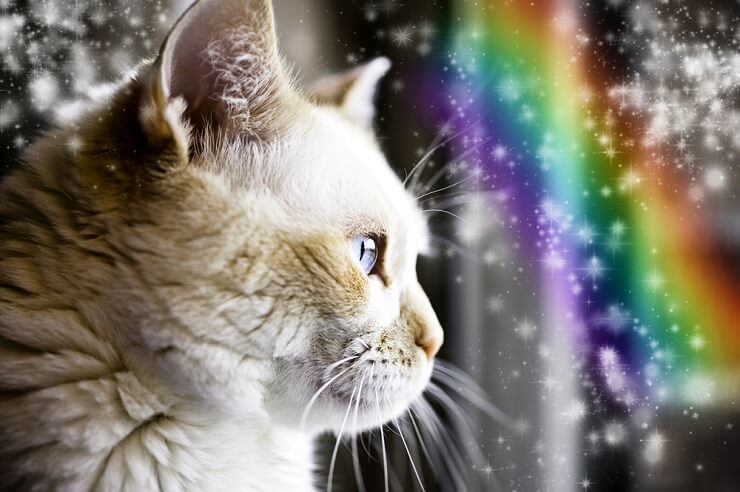
As well as aiming for a more digestible diet, ideally a so-called “novel diet” should be chosen: this means that it is made using ingredients that the cat has never eaten before. In particular, novel protein should be used rather than protein that the cat has encountered before.
The reason for this is that a cat can only be allergic to a diet that they have experienced previously. Beef, dairy, and fish are the most common ingredients known to cause food allergies in cats, so these should be avoided if possible.
It’s also worth reviewing a careful dietary history for your own cat (precisely what have they eaten in the past?) to work out the most likely ingredients that your cat has eaten before, and therefore which ingredients should be avoided in the future.
Typical “novel” protein sources include turkey, duck, lamb, rabbit, venison and fish (sometimes particular, unusual types of fish).
It’s worth considering using a commercial hydrolysed prescription diet: these have been pre-digested during the manufacturing process, and so that the proteins are in such short chains, with a lower molecular weight, making them far less likely to promote an allergic reaction.
What Other Treatment Can Be Given?
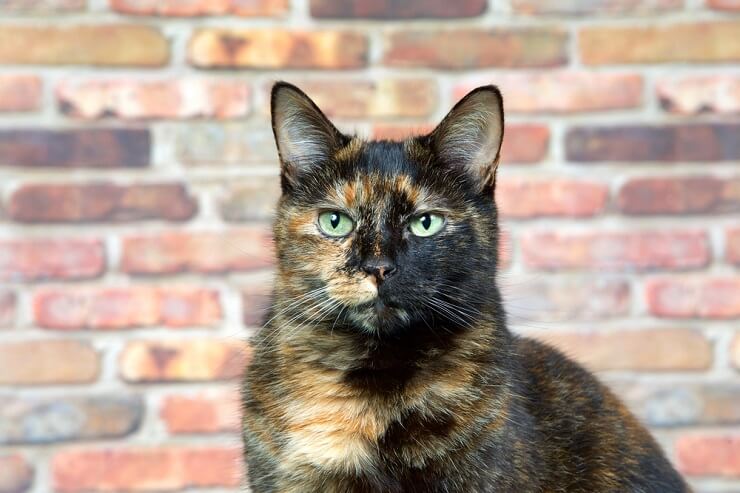
In mild cases, dietary modification can be enough to resolve signs of IBD. However often other medication is needed: these are prescription-only medications, so your vet will guide you towards the best answer for your cat.
Immunosuppressive Therapy
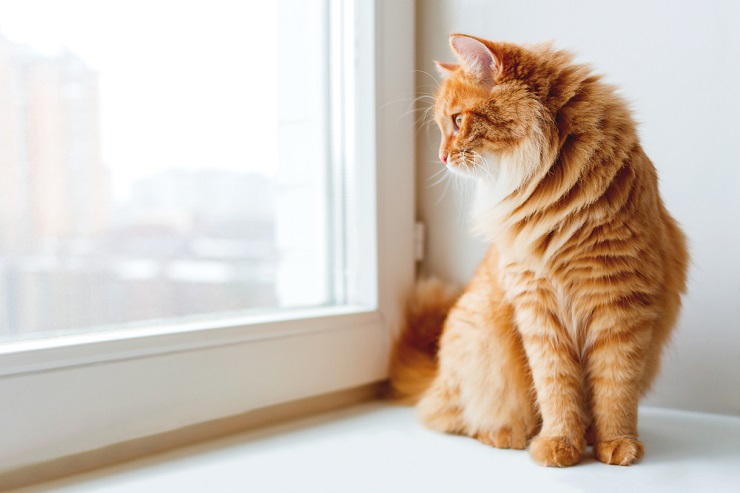
If cats have mild IBD that does not respond to dietary therapy, or if they have more serious signs of IBD with issues like low protein levels in their blood results, medication may be needed to suppress their over-reactive immune system.
There are a number of drugs that may be used and this should always be done under the close supervision of your vet:
- Corticosteroids (e.g. prednisone, prednisolone) are the most common first choice of vets. Prednisolone is usually started at a dose of 1-2 mg/kg twice daily, or sometimes an “average dose” of 5 mg per cat is given. Most patients respond in 1 – 2 weeks, and after 2 – 4 weeks, the dose is gradually reduced to a lower maintenance dose that may be around 0.5-1 mg/kg PO every second day.
- In some patients, a long acting injectable steroid may be suggested (for example if a cat is difficult to pill).
- Budesonide is an alternative therapy to prednisolone that may have fewer side effects in some patients, with doses of between 0.5-1 mg per cat once daily being given.
- Other immunosuppressive medications may be considered as an alternative if the drugs listed above are ineffective. Your vet will offer you guidance on the details of these if needed.
Anti-Inflammatory and Other Dietary Supplements
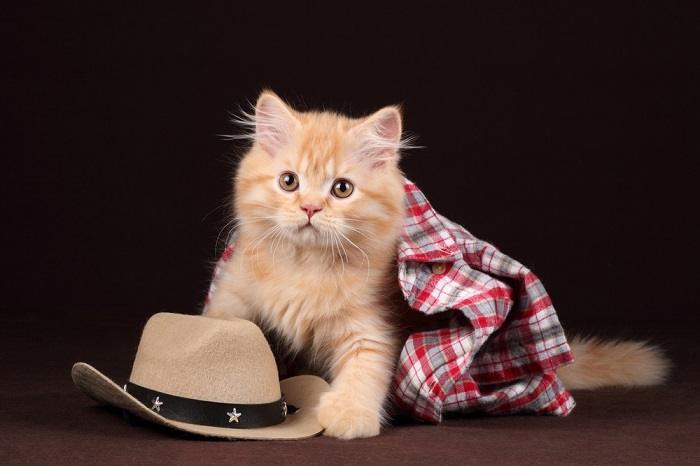
Your vet may recommend nutritional supplements which may have a natural anti-inflammatory effect: omega 3 fish oils are an example.
Some cats with IBD have reduced levels of folate and cobalamin, two B vitamins. If blood tests show that these are lower than normal, supplementation (by injection or orally, but talk to your vet) can help to promote normal digestive function, and can also help to boost your cat’s appetite.
Modifying the Microbiome
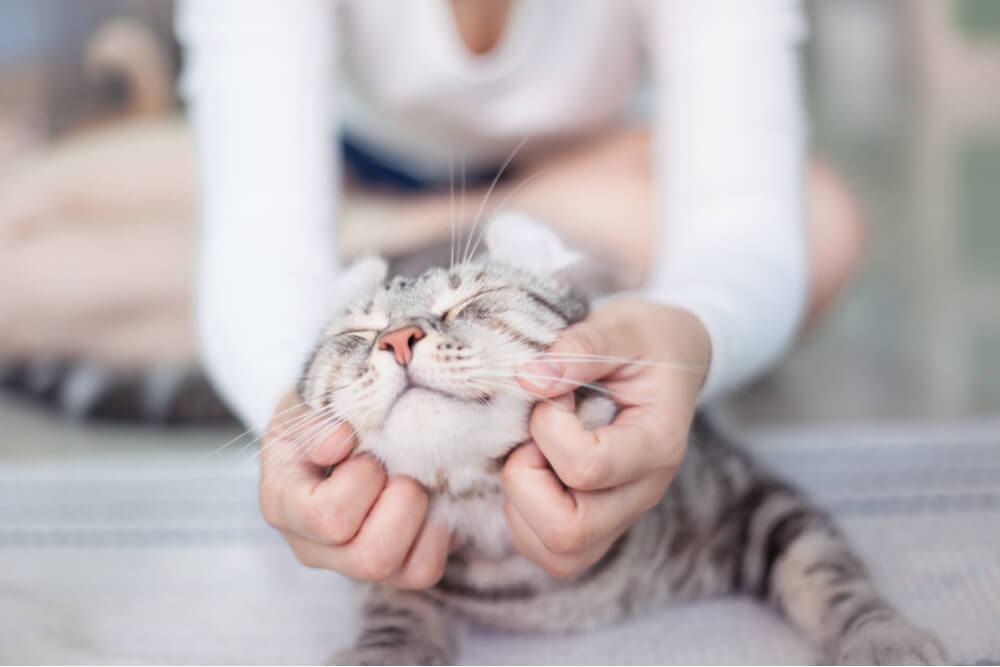
It’s believed that the microflora of the digestive tract (the “microbiome”) play a significant role in IBD in cats.
- A course of antibiotics ( such as metronidazole) may be recommended by your vet. Antibiotics work by killing bacteria, altering the microbiome in the process. Metronidazole also seems to have a separate anti-inflammatory effect on the GI tract.
- Prebiotics and probiotics may be suggested by your vet. These contribute to healthy intestinal bacteria in the gastrointestinal system and can help to alter the balance of the digestive tract microbiome to a healthy state.
- Some early research has been done using faecal transplantation therapy as a novel type of treatment, again altering the microbiome of the cat with IBD.
Other Therapies
Stem cell treatment is being examined as a possible alternative way of treating IBD.
Prognosis
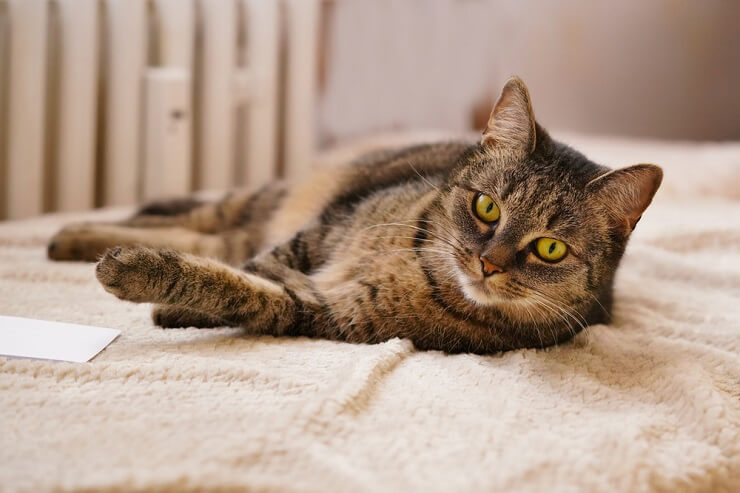
Most cases of IBD in cats respond to a combination of treatments, as listed above. It can take up to three months for cases to fully respond, and ongoing maintenance treatment may be needed for the cat’s lifetime.
What Happened to Eddy, the Cat in the Photo?
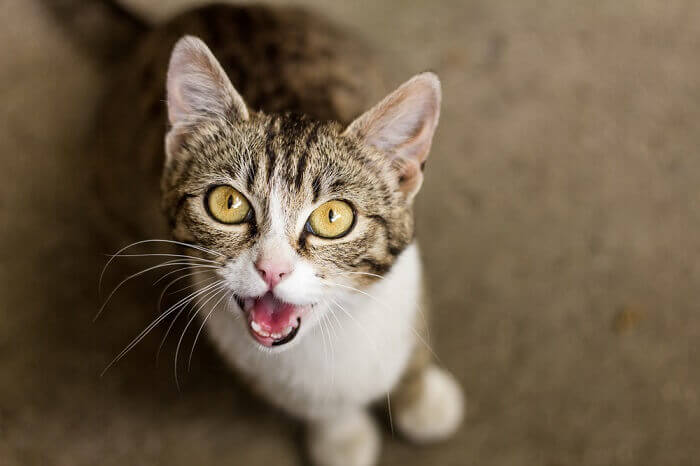
Once the cause of Eddy’s diarrhoea had finally been established, his carer was able to try him on a few different diets to see what suited him best.
She found a high-quality biscuit diet designed for cats with IBD, which he seemed to enjoy eating. He has now been symptom-free for two years.
Common Questions About Cats With IBD
Is IBD in cats painful?
IBD can cause gastrointestinal irritations and spasms, which cats may feel as a crampy sensation. Gas may build up internally, which may cause discomfort and pain. Finally the sense of urgency associated with severe diarrhea, and the nauseous feeling before vomiting, are issues that can adversely affect their quality of life.
When to euthanize a cat with IBD?
Although IBD is, in theory at least, always treatable, some cats have co-morbidities (i.e. other ongoing conditions like kidney disease) which make treatment much more difficult (e.g. they may not be able to tolerate some of the medications used).
Additionally, treatment can be expensive, and people may not be able to afford the comprehensive treatment that is needed.
If a cat is suffering unremitting discomfort, serious physical signs like emaciation, or if for any other reason a cat with IBD has a very poor quality of life, then you should discuss euthanasia with your vet.
What should I feed my cat with IBD?
See above: a highly digestible, preferably novel-source diet should be offered.
How to get a cat with IBD to gain weight?
Cats with IBD lose weight because their abnormal digestive system cannot process and absorb nutrients from the diet. The answer is to work with your vet to set up an effective treatment plan, so that digestive function gradually returns to normal.




